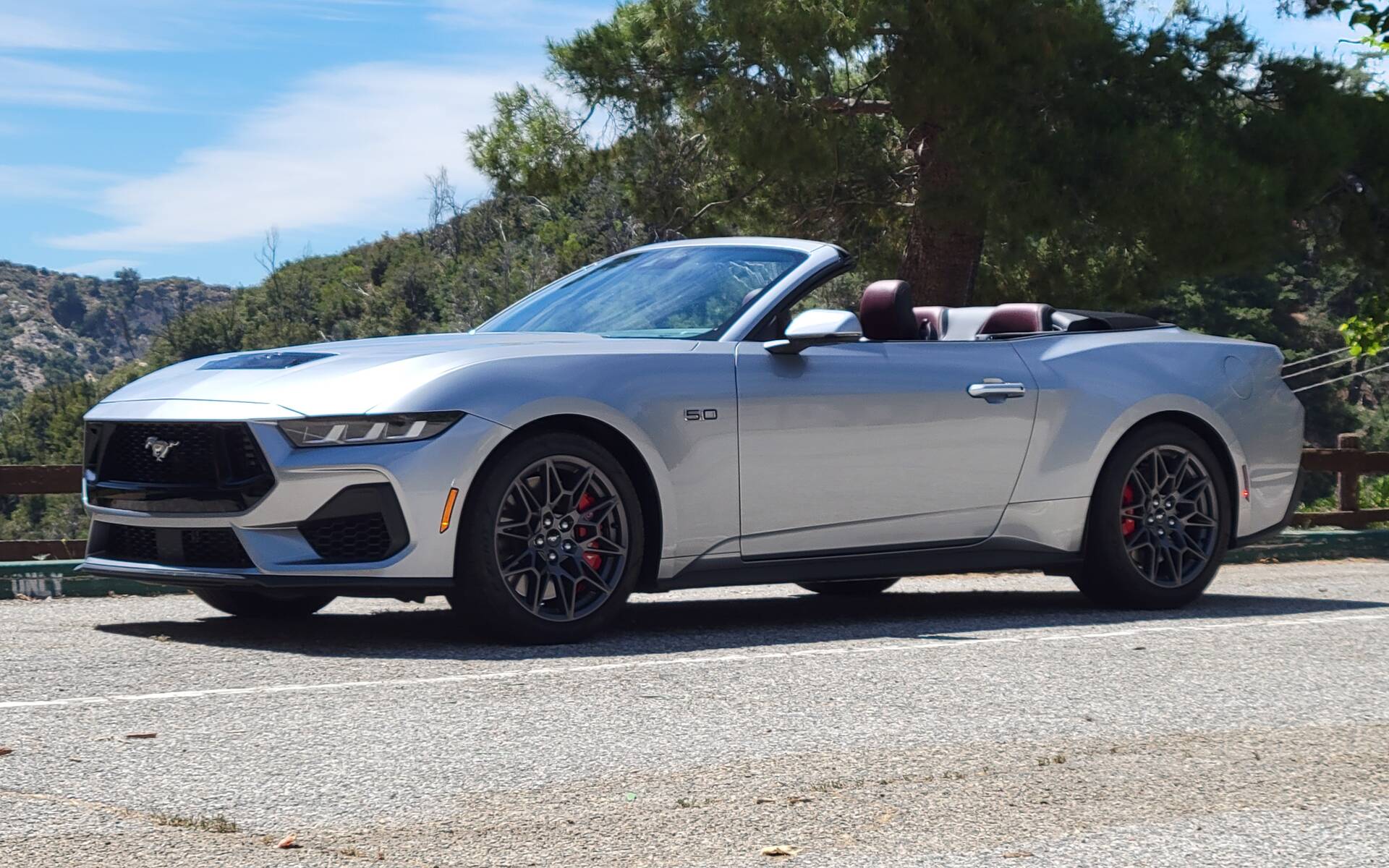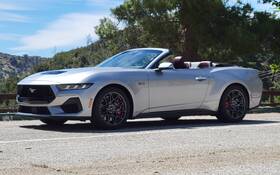2024 Ford Mustang: More Entertaining, More Predictable

| Strong points |
|
|---|---|
| Weak points |
|
The idea behind the Pony Car may not have originated with the Ford Mustang - the Plymouth Barracuda historically came first - but it was the former that gave rise to the name. One could also argue for a long time that the Mustang has gained such proportions and performance that it is it could be called a Muscle Car. Regardless, we can all agree that both terms will be called into question in the age of electrification.
For now, you can always get your hands on a good old Mustang that runs exclusively on dinosaur juice. And for its seventh generation, Ford has improved its best-seller in almost every respect. The Car Guide went to California to put the EcoBoost and GT versions through their paces.
- Also: Ford Mustang GT California Special Returns to Cure Winter Blues
- Also: Ford Performance Unveils 2024 Mustang Dark Horse R, New Racing Series

More Gadgets
Aside from its nostalgic yet controversial new silhouette, the Mustang has undergone a battery of technological changes in the cabin that, unfortunately, took away some of the nostalgia. The Mustang has switched to the dual-screen configuration that so many modern models adopt, abandoning a classic-looking instrument cluster and a series of manual controls. Despite our slight aversion to this type of configuration, we're forced to admit that it has a lot to bring to the table. Its clear, fully configurable, driver-centric and highly intuitive nature made this configuration extremely useful throughout our test drive.
To make up for its lack of nostalgia, designers have added quirky features to this setup. For example, you can give it a digital rendition of the ’87-’93 Fox Body Mustang cluster…

Although the front seats could be a little more supportive, the Mustang's cabin is generally comfortable, even though the rear seats are still cramped.
To make the Mustang even more entertaining, designers have added a host of gadgets designed to appeal to a younger clientele. The drift brake, for example, makes drifting the Mustang ridiculously easy. Also worthy of mention is the remote rev function, which lets you rev the engine remotely using the remote control. Good morning neighbors!
EcoBoost is Suprising, GT is Belligerent
The turbocharged four-cylinder engine has become a staple of the road to electrification in virtually all segments. This configuration has long been shunned for its laziness in terms of bottom-end torque delivery. But thanks to advances in turbocharging technology on several fronts, the “no replacement for displacement” days aren’t what they used to be. With its 315 hp and 350 lb-ft of torque, the 2.3-litre EcoBoost is more powerful than the 4.6-litre V8 that powered the 5th generation GT until 2010.
It features a new twin-scroll turbocharger and an improved cooling system. However, it can only be paired with the 10-speed automatic gearbox, which, while not as interactive as its manual counterpart, offers improved fuel consumption ratings of 10.8 L/100 km in the city and 7.1 L/100 km on the highway. Off-the line starts and pickups on the highway are surprisingly satisfying with the gearbox, which rarely seems like its stuck looking for the right gear.
But the EcoBoost, as honest and efficient as it may be, lacks the je ne sais quoi that makes a Mustang a Mustang...

Character, pops and bangs rumbling from the exhaust, linear delivery of performance - these are just some of the elements that make up that je ne sais quoi, which can only be provided by the 5.0-litre "Coyote" V8. And thanks to a new throttle body and air intake configurations and a new active exhaust, it delivers up to 486 hp and 418 lb-ft of torque. It can be paired with either a six-speed manual or a 10-speed automatic gearbox. While the former offers the ultimate in interaction, the latter performs quite well under pressure.
Predictable, But Exhilarating Driving Dynamics
Mustangs of yesteryear were like missiles: competent in a straight line, suicidal in corners. Throughout the last few generations, however, engineers have tried to stray away from this stereotype. And it all started when the live axle was replaced by an independent rear suspension for the S550 generation.
Since then, the sports car in the blue oval has continued to step up the game in the handling department, and the 2024 stands out for its agile handling for its weight, regardless of the engine under the hood. Our testers were all equipped with the Performance Package, which includes Magneride dynamic suspension, strut tower braces, a Torsen limited-slip differential and oversized Brembo brakes, whose performance saved our butts on a few occasions on the track. All in all, the new Mustang is more predictable and easy to drive than ever, without losing its fun, beastly character.

It's in every manufacturer's interest to constantly improve the most popular product in its catalogue. You can criticize the Stang’s polarizing exterior, or its less-than-nostalgic interior, but there's no denying that it is constantly improving in terms of driveability.
While it incorporates many of the elements that make a good Pony Car, affordability isn’t on the list anymore - with a starting price of $37,000 for the base EcoBoost model, and $48,500 for a base GT. For example, a GT model equipped with desirable options will exceed $60,000, and that's without the $2,095 shipping charge and added taxes.
So, if every quantifiable factor in the universe indicate that next Mustang will inevitably be electrified, the opportunity to get your hands on the last naturally aspirated V8-powered Mustang is here (now more than ever) for the real purists.











